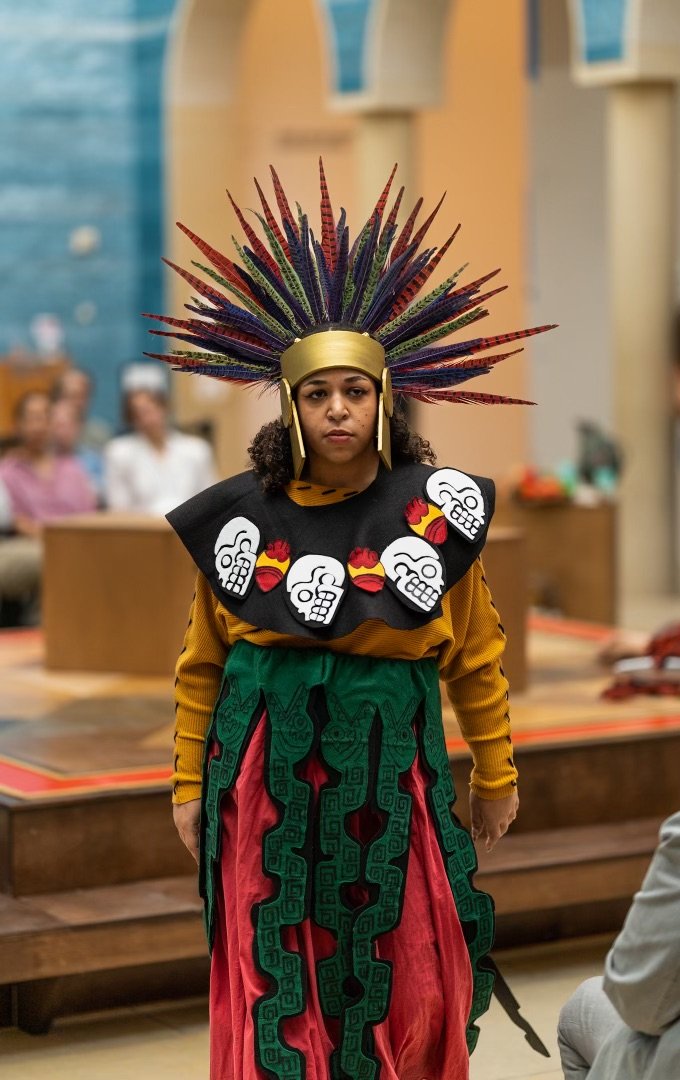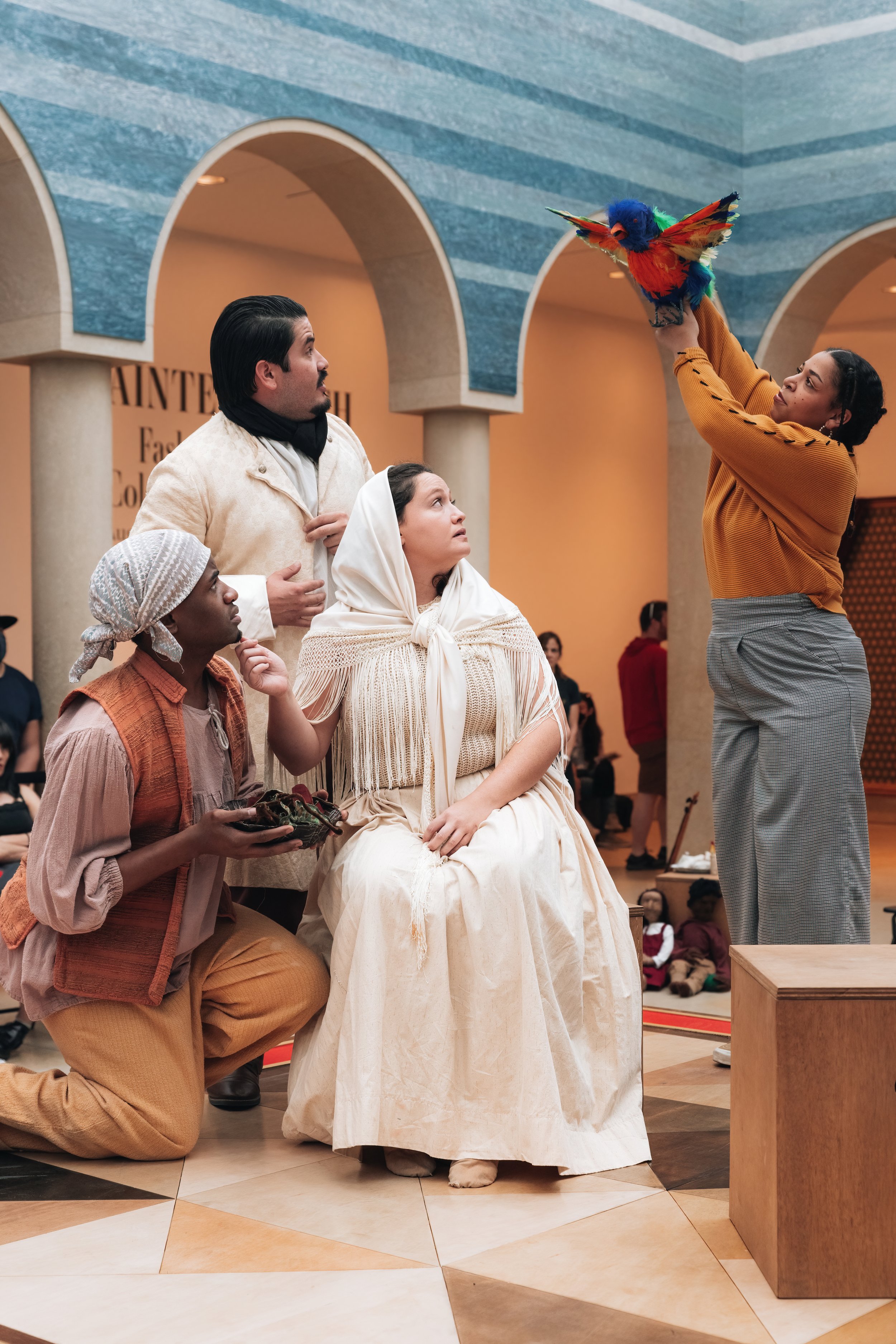bilingual hybrid performance piece
created with Salvage Vanguard Theater
ENSEMBLE: 7+
Casta is inspired by a series of casta paintings by Miguel Cabrera, a mixed-race painter from Oaxaca. Casta paintings were a unique form of portraiture that grew in popularity over the 18th century in Nueva España that depicted different racial mixtures arranged according to a hierarchy defined by Spanish elites.
When an apprentice is commissioned to paint a casta series for a wealthy patron, he tries to conform his work to a set hierarchy but finds the images revolt, illuminating a complex portrait of fluid Latinx identities.
Casta is being developed with help from Salvage Vanguard Theater (Austin, TX) and a creative team that includes co-directors jkjk (Jenny Larson Quiñones and khattieQ), composer Graham Reynolds, and translator Jesús I. Valles.
PRODUCTION HISTORY:
2022 - Salvage Vanguard Theater @ Blanton Museum of Art
(Austin, TX), WORLD PREMIERE
DEVELOPMENT HISTORY:
2019 - Salvage Vanguard Theater (Austin, TX), workshop
2018 - Tulsa Artist Fellowship (Tulsa, OK), salon reading
2018 - Milagro Theatre (Portland, OR), reading
2018 - Salvage Vanguard Theater (Austin, TX), workshop
2017 - Salvage Vanguard Theater & The Drama League (NYC), reading
2017 - Salvage Vanguard Theater (Austin, TX), reading
2016 - Salvage Vanguard Theater (Austin, TX), reading
AWARDS/HONORS:
2023 B. Iden Payne Awards
Nominee - Outstanding Lead Performer in a Drama, Noel Gaulin (PAINTER)
Nominee - Puppetry Performance
Nominee - Properties Design - April Garcia
Nominee - Puppet Design - Julia Smith
2021 National Endowment for the Arts, grant
2020 MAP Fund, grant
2019 Ragdale Foundation, residency
2017 NALAC Fund for the Arts, grant
PRESS:
Make/Shift: Performing the Art at the Blanton Museum of Art, Austin - Glasstire
Casta is an Ambitious Piece of Museum Theater - Sightlines Magazine
'Wouldn't it be amazing?’: Salvage Vanguard & the Blanton Museum team up - KUT 90.5
Interview with Concept Animals
Interview with TeatroLatinegro
“The well-researched play explores the limitations the casta system in Spain’s colonies and its connection to the institution of marriage placed on families and individuals, including in terms of gender presentation and the anxieties this version of white suprematism fueled.”
“The play covers a vast set of themes, from colorism, domestic violence, child abuse, transphobia, and classism to resilience and self-actualization. It is a dizzying and heartbreaking back-to-back portrayal of ordinary people trying to navigate the complexities of race as it was constructed in the region.”

